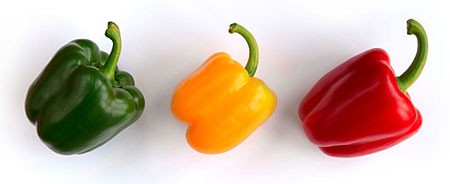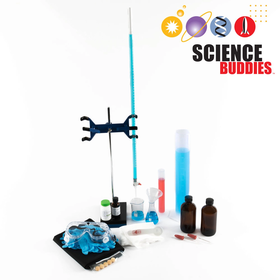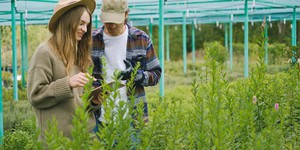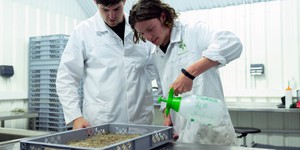Investigate the Vitamin C Level in Bell Peppers During Various Stages of Ripeness
Summary
Recommended Project Supplies
If you want a Project Idea with full instructions, please pick one without an asterisk (*) at the end of the title.
Abstract
Vitamin C is a water-soluble vitamin that has many functions in the body. Vitamin C is needed to bolster the immune system. It is an antioxidant that protects LDL cholesterol from oxidative damage, and it is needed to make collagen, a substance that strengthens many parts of the body, such as muscles and blood vessels. Our bodies do not make vitamin C, so we must get it from dietary sources. Citrus fruits, carrots, avocados, and spinach all have vitamin C. Bell peppers, like the ones shown in Figure 1, below, also contain vitamin C. Red, yellow, and orange bell peppers are all ripe versions of the green bell pepper. But how do the vitamin C levels vary among the different colors or ripeness of bell peppers? Does ripeness matter? To quantify the amount of vitamin C, you will need to do some titrating. Image Credit: Wikipedia, (Photograph by Luc Viatour) / GNU Free Documentation License.
Image Credit: Wikipedia, (Photograph by Luc Viatour) / GNU Free Documentation License.
Figure 1. Colorful bell peppers. (Luc Viatour, 2008.)
Titration is a chemistry technique used to determine the unknown concentration of a chemical in a solution. For information on how to titrate, consult the references in the Bibliography and the science fair project idea Which Orange Juice Has the Most Vitamin C?. You could use the titration kit from our partner Home Science Tools and follow the Procedure for that science project idea, but instead of using orange juice, use a de-seeded and de-stemmed bell pepper that has been blended with water (and then filtered using cheesecloth). You may want to weigh the bell pepper before blending it and adjust your samples so that you use the same amount of each type of bell pepper. This will make it easier to compare your results. For more information about doing a titration, visit the Science Buddies webpage Titration Tutorial: Tips & Tricks for Titrating.
So which color bell pepper do you think will have the most vitamin C, or do you think they will all have similar amounts? Try this science project and do some titrations to find out for yourself!
Bibliography
- University of Canterbury. (n.d.). Determination of Vitamin C by Redox Titration with Iodine. Science Outreach. Retrieved October 7, 2008.
- Helmenstine, A. (n.d.). Vitamin C Determination by Iodine Titration. Retrieved October 7, 2008.
- Wikipedia Contributors. (2008, October 7). Vitamin C. Wikipedia: The Free Encyclopedia. Retrieved October 7, 2008.
This next entry is an article that discusses the level of vitamin C as a function of ripeness in a variety of bell peppers.
- Antoniali, S. et al. (2007). Physico-Chemical Characterization of 'Zarco-HS' Yellow Bell Pepper for Different Ripeness Stages. Scientia Agricola, Vol. 64, No. 1. Retrieved October 8, 2008.
Ask an Expert
Global Connections
The United Nations Sustainable Development Goals (UNSDGs) are a blueprint to achieve a better and more sustainable future for all.
Careers
If you like this project, you might enjoy exploring these related careers:
Contact Us
If you have purchased a kit for this project from Science Buddies, we are pleased to answer your questions.In your email, please follow these instructions:
- What is your Science Buddies kit order number?
- Please describe how you need help as thoroughly as possible:
Examples
Good Question I'm trying to do Experimental Procedure step #5, "Scrape the insulation from the wire. . ." How do I know when I've scraped enough?
Good Question I'm at Experimental Procedure step #7, "Move the magnet back and forth . . ." and the LED is not lighting up.
Bad Question I don't understand the instructions. Help!
Good Question I am purchasing my materials. Can I substitute a 1N34 diode for the 1N25 diode called for in the material list?
Bad Question Can I use a different part?
Contact Us
Related Links
- Science Fair Project Guide
- Other Ideas Like This
- Cooking & Food Science Project Ideas
- My Favorites
- Chemistry Safety Guide
- Titration Tutorial: Tips & Tricks for Titrating












